When it comes to culinary herbs, bunching onions, also known as green onions, scallions, or Welsh onions, are a staple in many households. These versatile vegetables, scientifically known as Allium fistulosum, not only provide a mild onion flavor but also offer a range of health benefits. From adding a zesty kick to salads to enhancing the flavors of stir-fries and soups, bunching onions are a must-have in every vegetable garden.
Key Takeaways:
- Bunching onions, also known as green onions or scallions, are easy to grow and add a mild onion flavor to dishes.
- They are a popular choice for organic gardening and can be grown in a vegetable garden.
- With their versatility and health benefits, growing your own bunching onions can elevate your culinary experience.
- In this article, we will explore the cultivation, growing tips, and harvesting of bunching onions, as well as provide some delicious recipes and cooking ideas.
- Stay tuned to discover everything you need to know about growing these flavorful culinary herbs.
What Are Bunching Onions?
Bunching onions, also known as green onions, scallions, or Welsh onions, are perennial non-bulbing alliums. They have thick, round, hollow stems that are bright green in color and produce small white roots. The leaves of bunching onions have a mild onion flavor and can be consumed raw or cooked. Unlike other allium varieties that form bulbs, bunching onions do not form a bulb and are grown for their green stems.
Cultivation and History
Bunching onions, also known as green onions, scallions, or Welsh onions, have a rich cultivation history that dates back to their origins in China. They have been prized for their culinary and medicinal properties for centuries, making them a valuable addition to any vegetable garden.
These versatile culinary herbs are not only delicious but also have a long list of health benefits. They are rich in essential nutrients, including vitamins A, C, and K, as well as minerals like potassium and manganese. Bunching onions are also known to have antibacterial and anti-inflammatory properties, making them a valuable ingredient in traditional Chinese medicine.
Bunching onions are appreciated not only for their culinary and medicinal uses but also for their ability to repel pests. They naturally deter certain insects and pests, making them an attractive choice for organic gardening enthusiasts seeking natural pest control methods.
“Bunching onions have been a staple in Chinese cuisine for centuries, known for their unique flavor and medicinal properties,” says gardening expert Lily Chen. “I love growing them in my vegetable garden because they not only add a delicious punch to my dishes, but they also keep unwanted pests at bay.”
Growing your own bunching onions is a rewarding experience that allows you to have a fresh and abundant supply of this flavorful herb right at your fingertips. They can be easily cultivated from seed, transplants, or by division, making them suitable for gardeners of all experience levels.
Chinese Origins
Bunching onions, scientifically known as Allium fistulosum, are native to China. They have been cultivated and enjoyed in Chinese cuisine for centuries, thanks to their unique flavor and versatility in various dishes. From stir-fries to soups and salads, bunching onions add a delightful oniony taste that enhances the overall flavor profile of any recipe.
Medicinal Uses
In traditional Chinese medicine, bunching onions have long been recognized for their healing properties. They are believed to have diuretic, analgesic, and antibacterial effects. Bunching onions are often used to alleviate symptoms of colds, coughs, and sore throats. Their mild anti-inflammatory properties contribute to their medicinal value, making them a go-to herb for natural remedies.
Image:
How to Grow Bunching Onions
If you’re looking to add a versatile and flavorful herb to your vegetable garden, growing bunching onions is a great choice. Bunching onions, also known as green onions, scallions, or Welsh onions, are easy to grow and can thrive in various soil conditions. Whether you’re a seasoned organic gardener or just starting out, here are some tips to help you successfully grow your own bunching onions:
Light and Soil Requirements
Bunching onions prefer full sun or partial shade. Ensure they receive at least 6 hours of direct sunlight each day. As for the soil, it should be well-draining and enriched with organic matter.
Starting from Seed
- Sow the seeds directly into the garden in early spring or late summer. Make sure to plant them in rows spaced about 12 inches apart.
- Plant the seeds half an inch deep and cover them with soil.
- Keep the soil consistently moist until the seeds germinate, which usually takes around 7 to 10 days.
- Once the seedlings reach a height of 3 to 4 inches, thin them out to ensure proper spacing between plants.
Starting from Seedlings
- If you prefer to start with seedlings, begin by transplanting them to the garden once they are 3 to 4 inches tall.
- Start the seedlings indoors about 5 to 6 weeks before the last frost date.
- Choose a container with drainage holes and fill it with well-draining potting soil.
- Place the seedlings in the container and keep them in a sunny location, such as a windowsill or under grow lights.
- Water the seedlings regularly and ensure the soil remains evenly moist.
- Avoid overcrowding the seedlings to allow for proper air circulation.
Caring for Bunching Onions
Bunching onions are hardy plants and can tolerate different soil conditions, including drought. However, to ensure a robust crop, it’s essential to provide them with regular watering and adequate nutrients.
Hint: To enhance the onion’s growth, consider adding organic matter or liquid feed to the soil. This will provide the necessary nutrients for healthy development.
Additionally, keep an eye out for weeds and promptly remove them to prevent competition for nutrients and water.
Harvesting Bunching Onions
Depending on your preference, you can harvest bunching onions at different stages of growth:
- To harvest individual stems, wait until they are at least 30cm long. Cut the stem at ground level, and the onion will regrow.
- If you prefer to harvest the entire plant, carefully loosen the soil around the base and lift the clump of stems.
Bunching onions are best enjoyed fresh. However, if you have excess harvest, they can also be stored by freezing or drying. Freezing involves chopping the onions into small pieces and storing them in a freezer bag. Drying requires tying the stems together and hanging them in a cool, dry place until they are completely dry.
Cultivars to Select
| Variety | Description | Climate |
|---|---|---|
| Evergreen | A popular variety with dark green leaves and long stems. Mild flavor. | Wide range |
| Heshiko | Thick stems and strong flavor. Suitable for cooler climates. | Cooler climates |
| Tokyo Long White | Long white stems and a mild onion flavor. Ideal for longer growing seasons. | Longer growing seasons |
Experimenting with different cultivars can add variety to your garden and culinary creations.
Growing Tips for Bunching Onions
To achieve the best results with bunching onions, it is important to provide them with nutrient-rich soil, regular watering, and weed-free surroundings. The addition of organic matter such as compost or aged manure before planting will improve the soil quality. Watering the plants regularly and mulching around them will help keep the soil moist and prevent weed growth. It is also recommended to plant bunching onions in succession every three to four weeks for a continuous supply.
Cultivars to Select
When it comes to growing bunching onions in your vegetable garden, there are several cultivars to choose from, each offering its own unique characteristics. Experimenting with different cultivars can add variety to your garden and culinary creations.
Popular Varieties
- Evergreen: This variety of bunching onion is known for its long, tender leaves and mild onion flavor. It is a popular choice for both culinary and ornamental purposes.
- Heshiko: Heshiko is a Japanese variety of bunching onion that is characterized by its thick stems and strong onion flavor. It is great for adding a bold taste to your dishes.
- Tokyo Long White: As the name suggests, this variety of bunching onion has long, white stems with a mild onion flavor. It is a versatile choice for both fresh and cooked dishes.
These are just a few examples of the many cultivars available. Depending on your taste preferences and growing conditions, you can choose the cultivars that best suit your needs. So why not add some variety to your vegetable garden by trying out different bunching onion cultivars?
Managing Pests and Disease
Bunching onions, also known as green onions or scallions, are generally resistant to pests and diseases. However, there are a few common issues that can affect the crop. It is important to be aware of these potential problems and take preventive measures to ensure a healthy harvest.
Pests
The two most common pests that can affect bunching onions are allium leaf miners and thrips. Allium leaf miners are small flies that lay eggs on the leaves of allium plants, including bunching onions. The larvae then tunnel into the leaves, causing damage and making the plants susceptible to diseases. Thrips, on the other hand, are tiny insects that feed on the leaves of the plants, causing them to become distorted and discolored.
To control these pests, integrated pest management practices can be implemented. This involves a combination of cultural, biological, and chemical controls. One effective method is the use of row covers, which act as a physical barrier and prevent insects from reaching the plants. Additionally, natural predators such as ladybugs and lacewings can be introduced to the garden to keep pest populations in check. If necessary, organic-approved insecticides can be used as a last resort.
Diseases
One of the main diseases that can affect allium plants, including bunching onions, is white rot. This soil-borne fungal infection can cause browning and decay of the roots and bulbs, ultimately leading to plant death. To prevent the spread of white rot, crop rotation is crucial. Avoid planting alliums in the same area of the garden for consecutive years as the fungus can survive in the soil for a long time. Maintaining soil health, including proper drainage and adequate organic matter, can also help minimize the risk of white rot.
Harvesting Bunching Onions
Harvesting bunching onions is a rewarding process that allows you to enjoy the fresh flavors of these versatile vegetables. To ensure optimal taste and quality, it’s important to know the right time to harvest and how to do it properly.
Bunching onions can be harvested when the green leaves are at least 30cm long. This indicates that they have reached a suitable size for consumption. The longer the leaves, the stronger the flavor will be.
There are two main methods for harvesting bunching onions. The first method involves cutting the individual stems as needed at ground level. This allows for a continuous harvest, as the plants will quickly regrow new stems from the base. Simply use a sharp knife or shears to make a clean cut.
The second method involves harvesting the entire plant by loosening the soil around the base and lifting the clump of stems. This is a great option if you need a large quantity of onions for a specific dish or preservation purposes. After harvesting, gently shake off any excess soil and remove any damaged or discolored leaves.
It’s important to use bunching onions as fresh as possible to enjoy their crisp texture and vibrant flavor. If you’re not using them immediately, store them in the refrigerator to prevent wilting. Bunching onions have a relatively short shelf life, so it’s best to consume them within a few days of harvest.
Now that you know how to harvest bunching onions, you can confidently incorporate them into your favorite recipes or experiment with new culinary creations.
Next, let’s explore some methods for preserving bunching onions to enjoy their flavors throughout the year.
Harvesting Bunching Onions
| Step | Method |
|---|---|
| 1 | Cut individual stems at ground level as needed |
| 2 | Harvest the entire plant by loosening the soil around the base |
| 3 | Store bunching onions in the refrigerator for freshness |
Preserving Bunching Onions
In addition to enjoying bunching onions fresh from the garden, it’s also possible to preserve them for later use. This ensures that you can enjoy the delicious flavor of these versatile onions even when they’re not in season. There are two primary methods for preserving bunching onions: drying and freezing.
Drying Bunching Onions
To dry bunching onions, start by tying the tops of a few stems together with twine or string. Hang them in a cool, dry place, such as a well-ventilated pantry or a dark corner of your kitchen. Allow the onions to air dry naturally, ensuring that they are not exposed to moisture or direct sunlight. Once the onions are completely dry, the leaves can be crumbled and stored in an airtight container, such as a glass jar or a resealable plastic bag. This method allows the full flavor of the onions to be concentrated, making them an excellent addition to soups, stews, and other cooked dishes.
Freezing Bunching Onions
Freezing is another effective way to preserve bunching onions. Begin by washing and trimming any wilted or damaged parts of the onions. Chop the onions into small pieces or slice them, depending on your preference. Place the chopped or sliced onions into a freezer bag, removing any excess air before sealing it tightly. Label the bag with the date and contents, then place it in the freezer. Frozen bunching onions can be used directly from the freezer in various cooked dishes, such as stir-fries, omelets, or casseroles. They retain their flavor and texture remarkably well when frozen.
Preserving bunching onions allows you to enjoy their unique flavor and culinary versatility throughout the year. Whether you prefer dried onions for concentrated flavor or frozen onions for convenient use in various dishes, these preservation methods ensure that you can savor the taste of these delightful alliums even when they’re not in season.
Conclusion
Bunching onions, also known as green onions, scallions, or Welsh onions, are a versatile and rewarding crop to grow in your own vegetable garden. With their mild onion flavor and ability to be used in a variety of dishes, they are a popular choice for culinary enthusiasts. By following the cultivation and growing tips mentioned in this article, you can enjoy a bountiful harvest of healthy bunching onions.
Whether used fresh in salads, soups, or stir-fries, or preserved through drying or freezing, bunching onions are sure to add a delicious punch of flavor to your cooking. Their bright green stems and aromatic taste make them a culinary herb worth cultivating.
So why not start your organic gardening journey and grow your own bunching onions today? Your vegetable garden will be enhanced with these easy-to-grow and versatile culinary herbs. From planting to harvest, you’ll find joy in the process and satisfaction in knowing that your dishes are made with homegrown, organic bunching onions. Happy gardening and happy cooking!

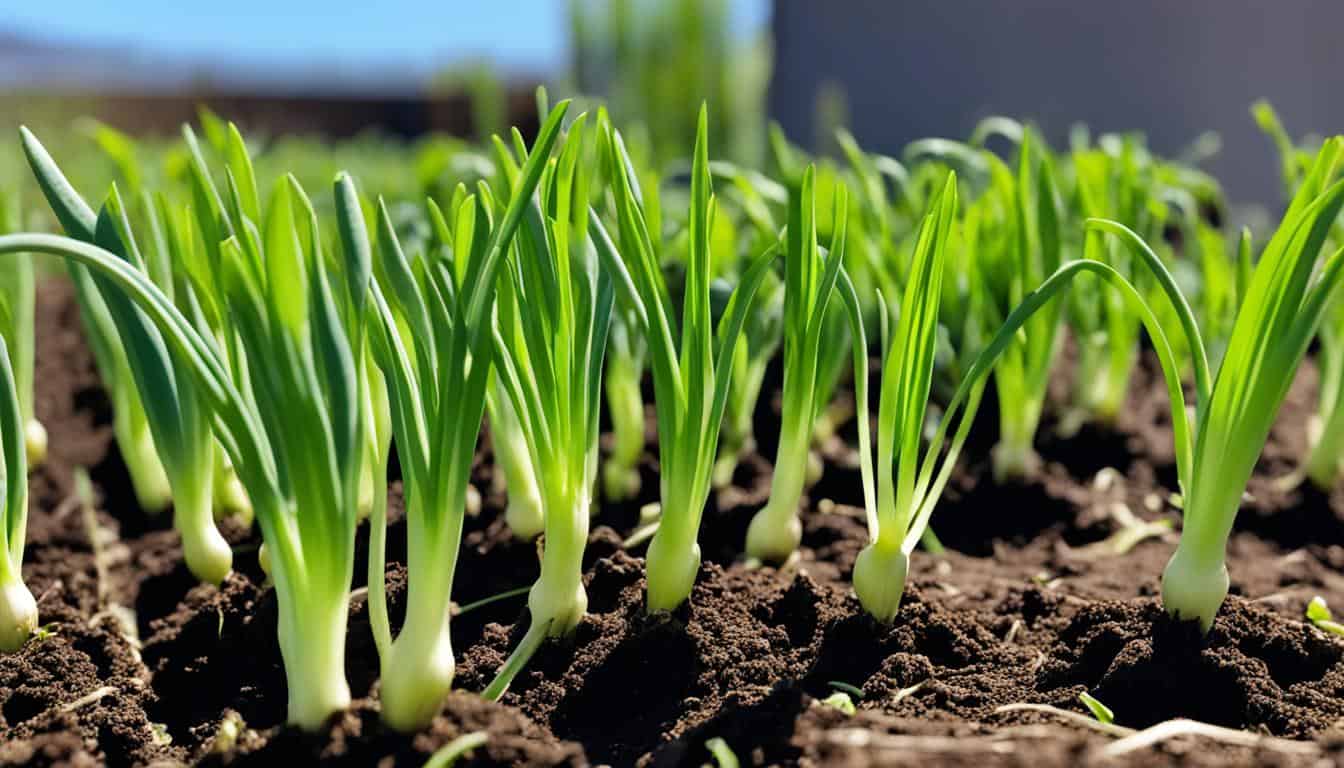
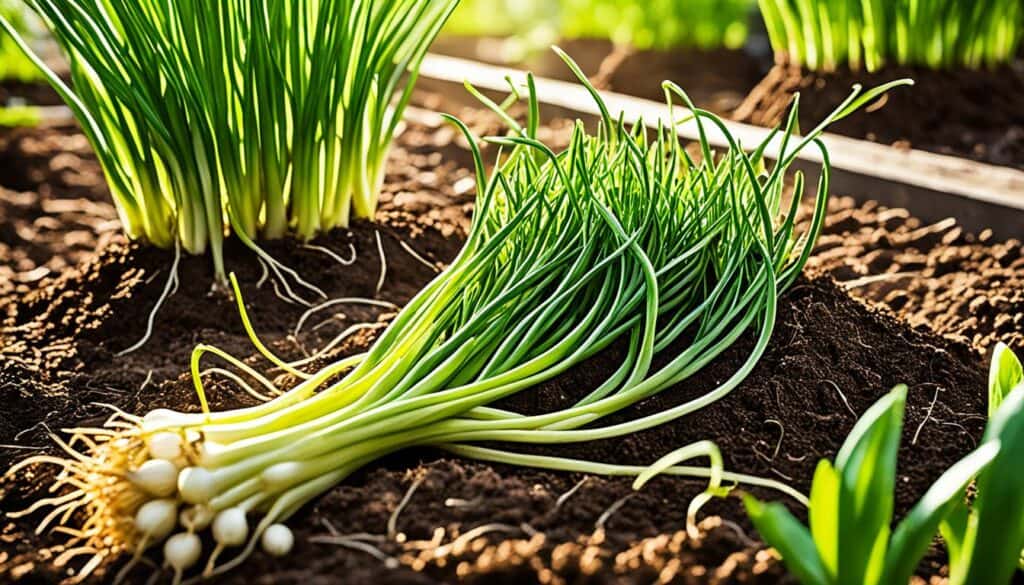
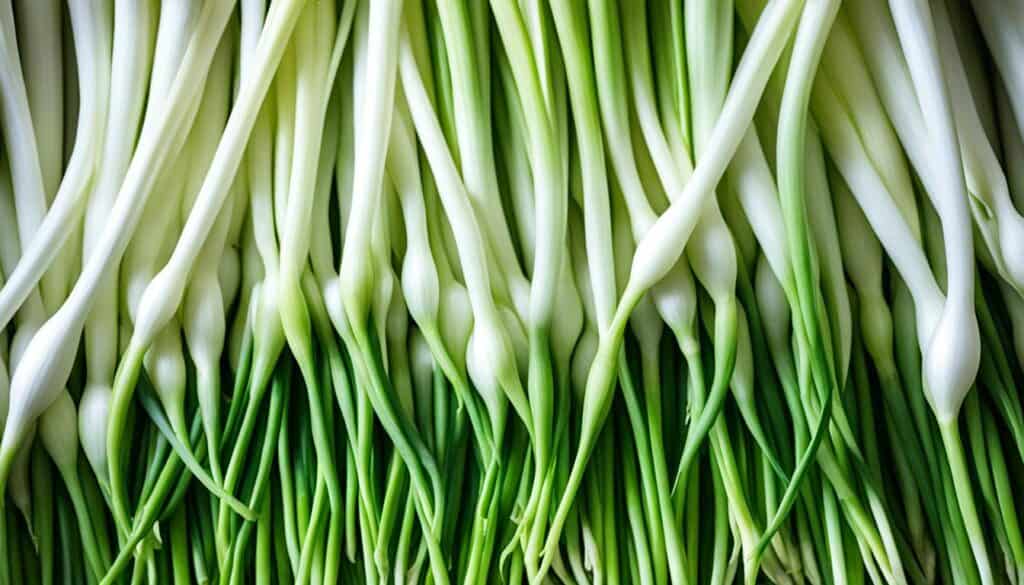
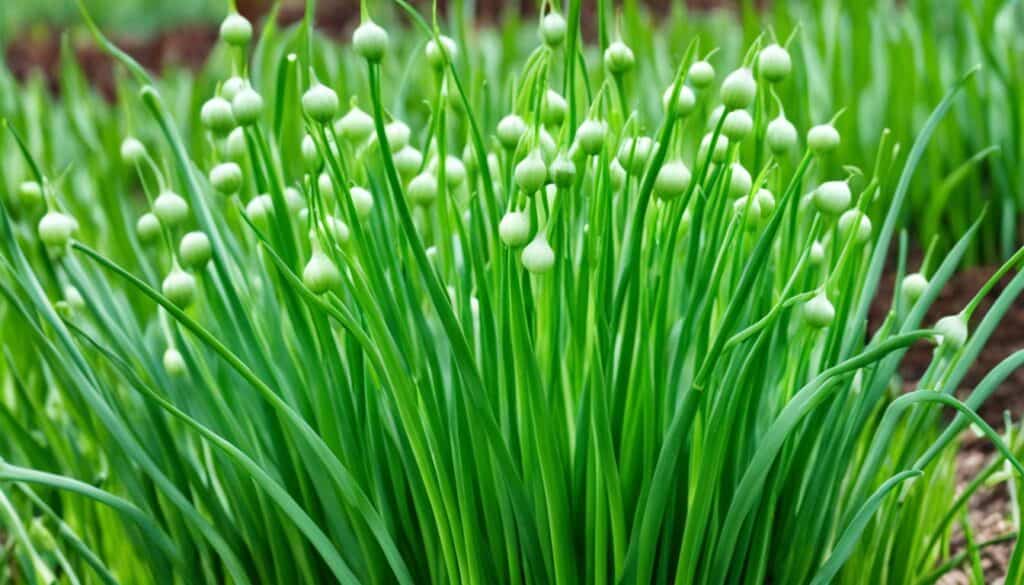
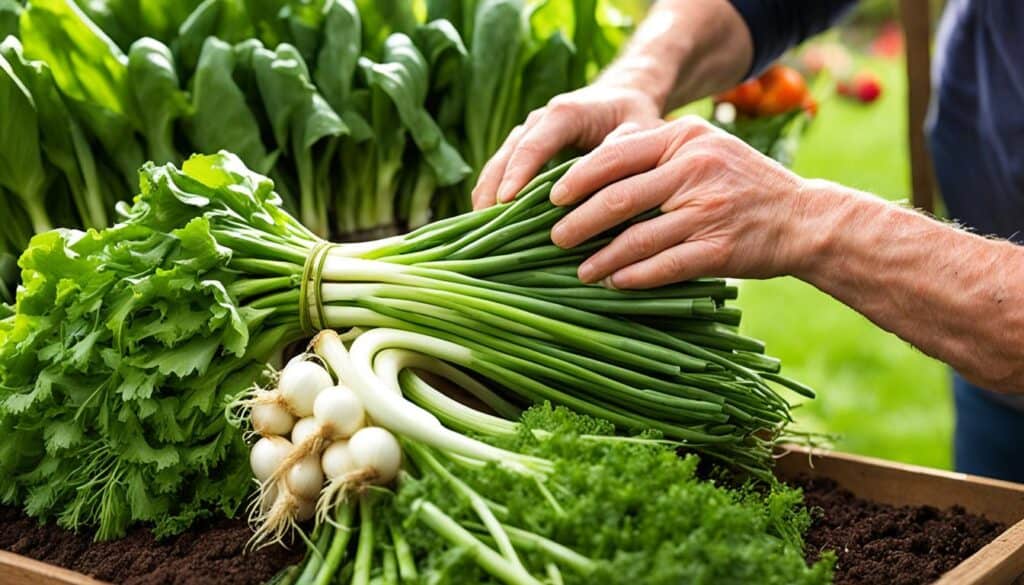
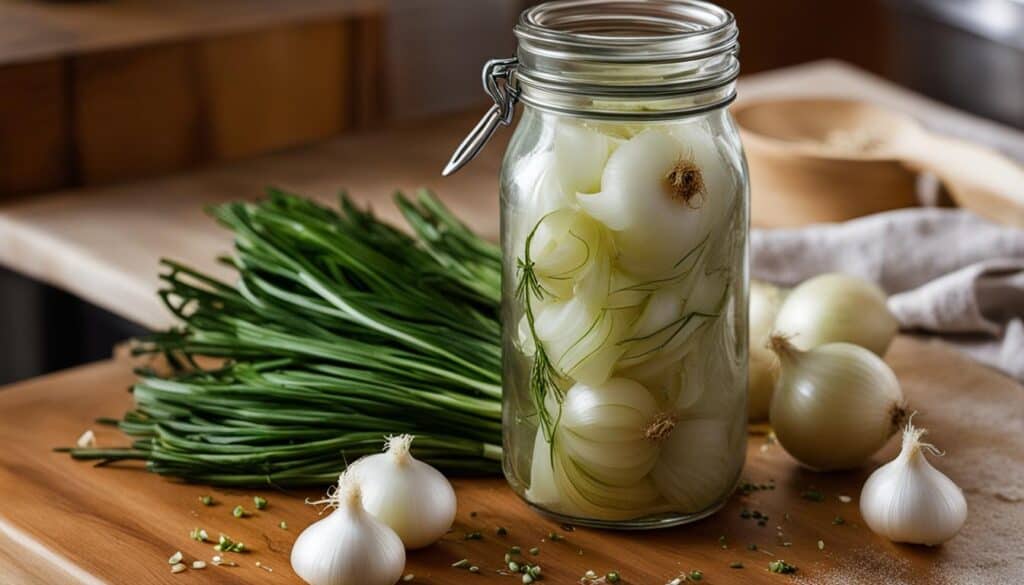



Leave a Reply